If you’re in Arkansas and craving a unique adventure, Crater of Diamonds State Park in Murfreesboro is a must-visit.
This is the only place in the world where the public can search for real diamonds in their original volcanic source…and keep what they find! Yes, the motto here is “finders keepers.”
Here is everything you need to know about digging for diamonds at the Crater of Diamonds State Park!
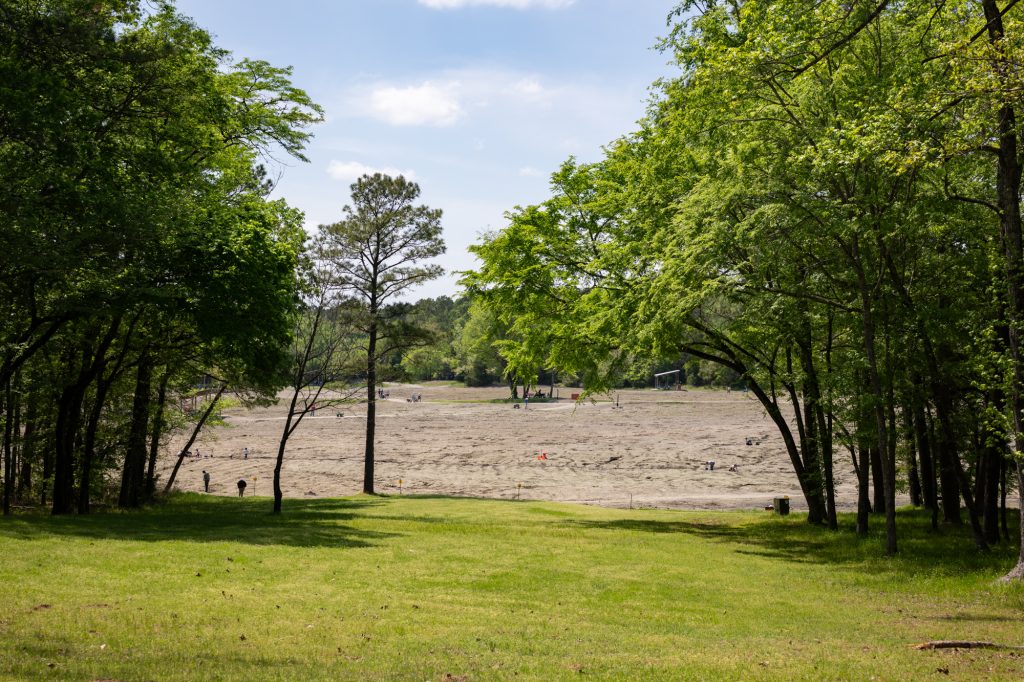
Location of Crater of Diamonds State Park
The address of Crater of Diamonds State Park is:
209 State Park Rd. Murfreesboro, AR 71958
It is in Southwest Arkansas near the town of Murfreesboro about an hour and forty-five minutes from the capital city of Little Rock.
The Digging Experience
We visited Crater of Diamonds State Park on a pretty spring day.
You will start at the visitor center where you can view real, uncut diamonds and interact with exhibits illustrating the area’s unique history and geology.
At the Diamond Discovery Center, you can learn more about rocks and minerals found at the park and how to search for diamonds using various techniques.
We quickly discovered that some of the people who come here are super serious searchers! Everyone has to pay an admission fee but you are allowed to bring your own digging and panning equipment.
We could tell that some people came VERY prepared. This was not us. We arrived without any equipment at all.
Fortunately the center allows you to rent a diamond searching kit. The one we selected included a shovel, buckets, a screen set, and a wagon.
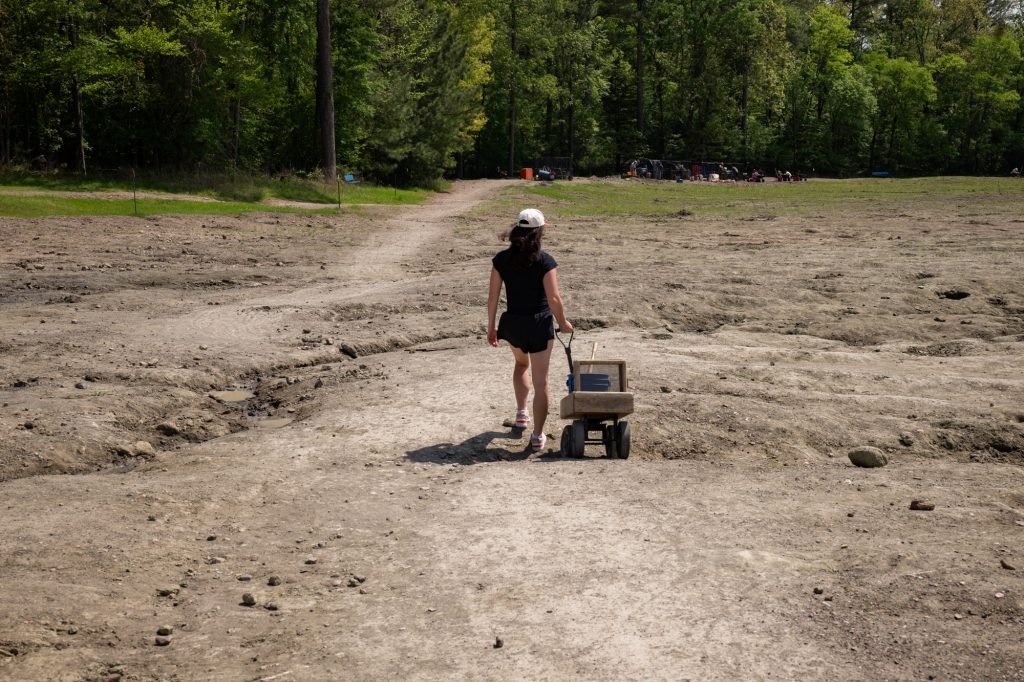
Then it was off to the field.
Diamond Searching Methods
There are three main methods to search for diamonds:
- Surface Searching: Walking the fields and looking for diamonds on the ground, especially after rain when the soil has been washed away.
- Dry Sifting: Using a screen to sift through dry soil to find diamonds.
- Wet Sifting: Washing soil through a screen with water to separate heavier materials like diamonds.
You might be surprised to learn that MANY of the diamonds are found by people just walking around and looking at the ground. This is best to do after there has been a hard rain.
Rain washes the soil away, leaving diamonds and other rocks and minerals exposed on the surface.
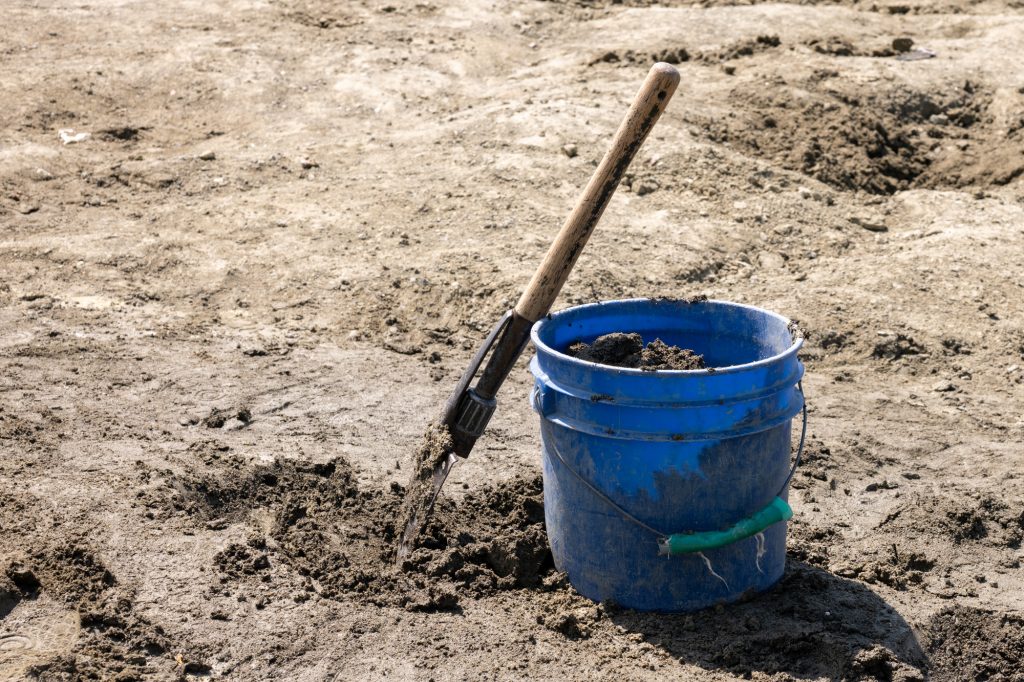
We opted for wet sifting. First we dug up a couple of buckets of dirt and then took it to the washing station. We searched through and saved any pebbles that looked like they might be important.
It’s a bit of work, but the anticipation of finding a diamond makes it worthwhile.
We spent a few hours digging and searching and sifting. After we were done we took all our finds back to the center where a helpful young woman identified our stones for us.
Sadly, we did not find a diamond that day…but people do find them almost every day!
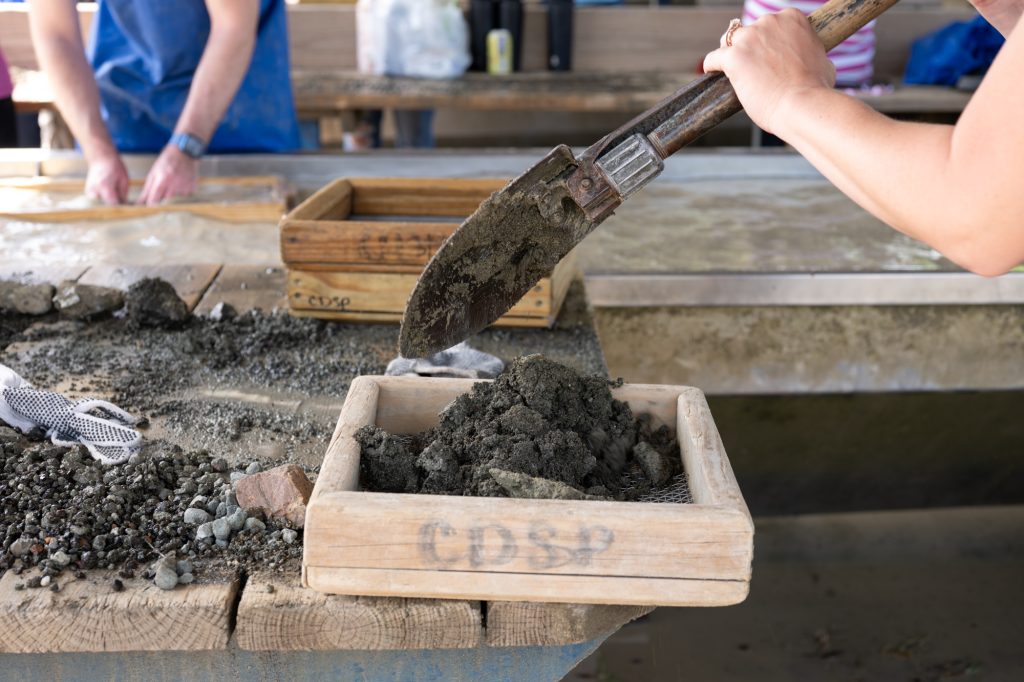
All About the Diamonds: What Are You Looking For
On average visitors find a couple of diamonds each day!
In fact, in 2024 over 700 diamonds were found. You can look at this chart on the state parks website to see the statistics for diamond finds!
Here is some more information about the typical diamonds found at the state park that will help you to know exactly what type of stone you are searching for:
- Shape: Diamonds found at the Crater are typically smooth and well rounded.
- Size: The average size of a diamond is about the size of a paper match head, So you will be looking for something small. A 1-carat diamond is about the size of a green pea and most of the diamonds found are less than 1 carat.
- Appearance: Diamonds feel like they have an oily film on them which keeps them from being dirty have a metallic luster and will not be dull. They will not be clear like glass but they are translucent. .You can typically see into them but not through them.
- Color: The colors of diamonds found at the park are white, brown, and yellow, in that order.

Notable Diamond Discoveries
Since diamonds were first discovered here in 1906 over 75,000 more have been unearthed. Some of the most famous finds include:
- Uncle Sam (1924): A 40.23-carat white diamond with a pink cast remains the largest diamond ever found in the U.S.
- Strawn-Wagner Diamond (1990): This 3.03-carat gem was later cut to 1.09 carats and is renowned for being internally flawless and colorless.
- Esperanza Diamond (2015): Bobbie Oskarson from Colorado found an 8.52-carat white diamond after just 20 minutes of searching.
- 7.46-Carat Brown Diamond (2024): Julien Navas, a tourist from Paris, discovered this chocolate brown diamond.
Some of the major diamond finds are marked by stakes on the digging field.
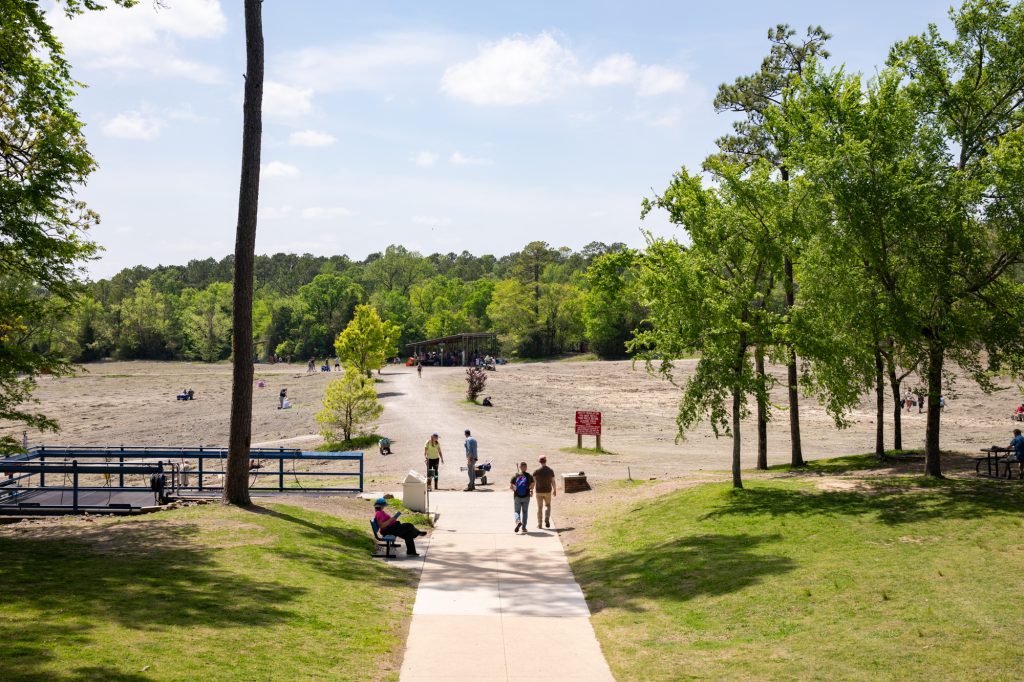
Why Are There Diamonds at Crater of Diamonds State Park?
Over 100 million years ago, a volcanic eruption brought diamonds from deep within the Earth’s mantle to the surface, creating a 37.5-acre diamond-rich field.
This area, now the park’s search field, is actually the eroded surface of an ancient volcanic crater. These days the soil is regularly plowed to help uncover new gems.

Quick History of Crater of Diamonds State Park
The history of the diamond field also sparkles.
After local geologists heard that diamonds had been discovered in the peridotite soil of Kimberly, South Africa they began to suspect that there might be diamonds in the peridotite soil near Murfreesboro, Arkansas.
A state geologist named John Branner gave the place a thorough surface search in 1889 but didn’t find anything!
In 1906 a farmer named John Huddleston purchased a 160-acre farm that included some of this land.
Huddleston told of finding his first diamond, “my eyes fell on a glittering pebble … I knew it was different from any I had ever seen before … I hurried to the house with the pebble, saddled my mule and started for Murfreesboro … riding through the lane, my eye caught another glitter, and I dismounted and picked it up out of the dust.”
These two stones were sent to a Little Rock jeweler who confirmed them to be genuine blue-white diamonds one weighing 2-5/8 carats, and the other 1-3/8 carats.
After Huddleston sold his land it was subsequently owned by several different entrepreneurs and run as both a potential commercial mine and as a tourist attraction.
In 1972 the State of Arkansas bought the land to develop as a state park.
More Than Just Diamonds
Beyond diamond hunting, the park also offers walking trails, picnic areas, and a seasonal water park which is a perfect place to cool off after spending a day in the sun.
There are also 47 Class AAA campsites and 5 walk-in tent sites..
Tips for Your Visit
- Dress Appropriately: Wear old clothes and shoes, you will get dirty and muddy.
- Watch where you walk: The field will be riddled with holes from other searchers so your shoes should be sturdy and watch where you are walking!
- Be prepared for the heat and sun: This is a wide open field with very little shade. We even saw some people with a beach umbrella set up to dig under. At the very least wear a hat and sunscreen.
- Stay Hydrated: Bring plenty of water, especially in the summer heat.
- Be Patient: Finding a diamond takes time and a bit of luck.
- Ask for Help: Park staff are friendly and offer free identification of your finds.
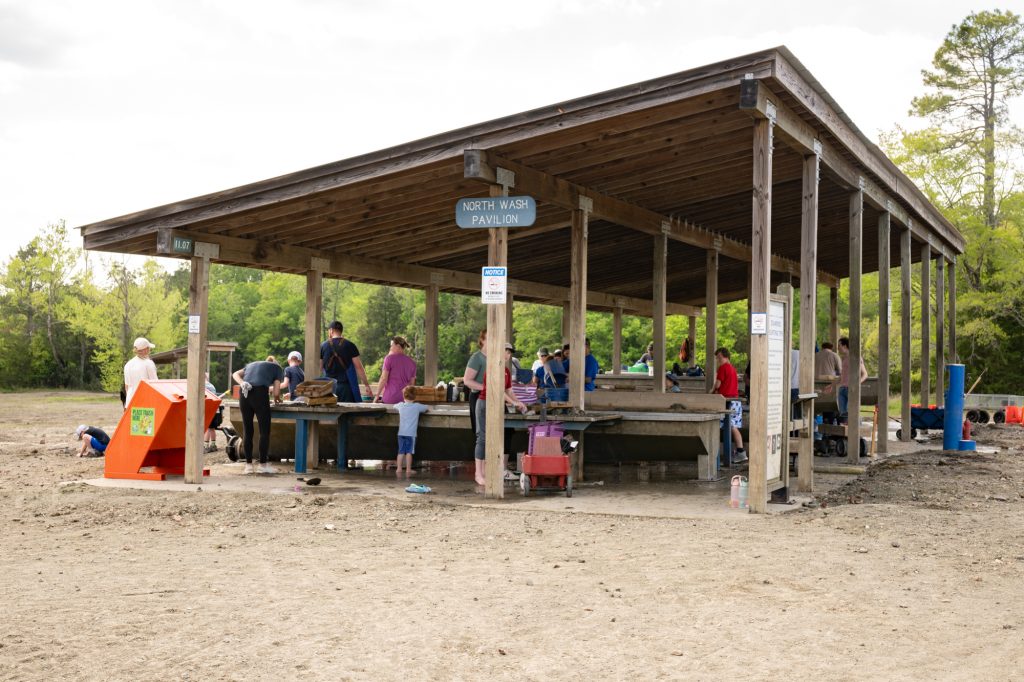
Whether you’re a seasoned rockhound or a curious traveler, the Crater of Diamonds State Park offers a unique and exciting experience.
Who knows? You might just unearth your own gem.
Thanks so much for stopping by!





